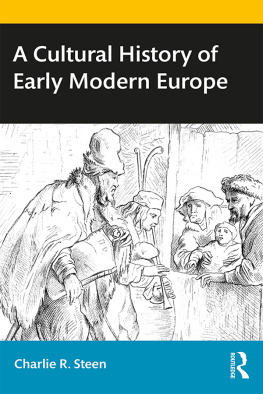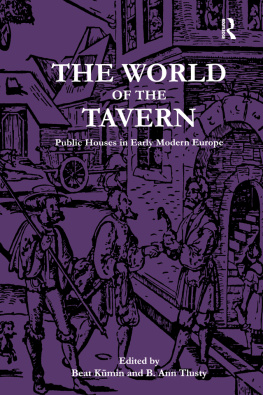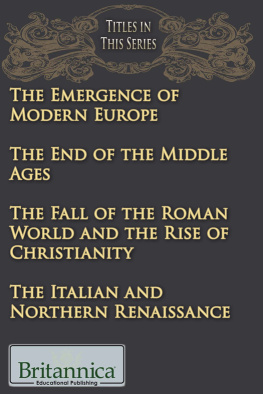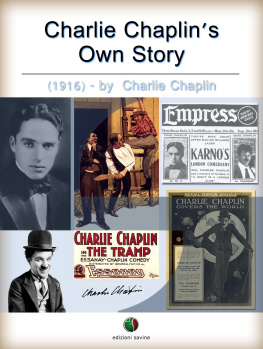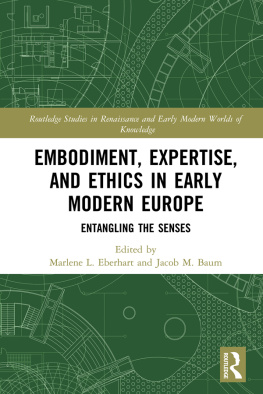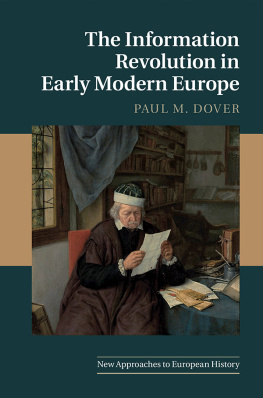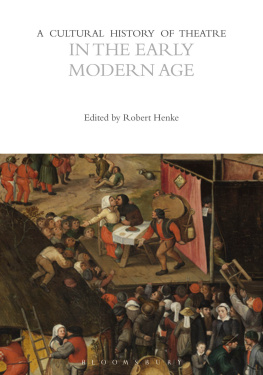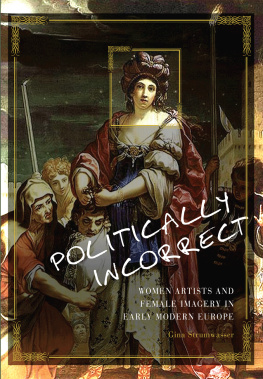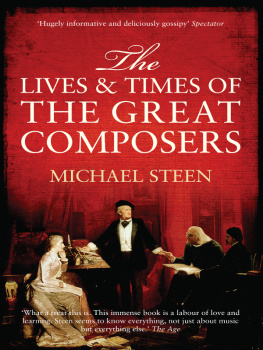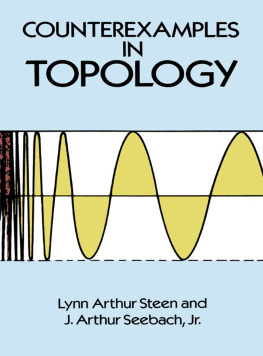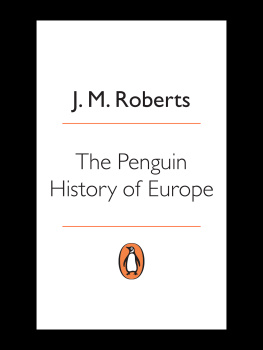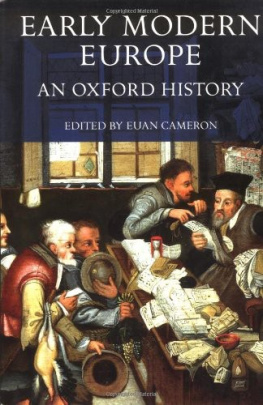A Cultural History of Early Modern Europe
A Cultural History of Early Modern Europe examines the relationships that developed in cities from the time of the late Renaissance through to the Napoleonic period, exploring culture in the broadest sense by selecting a variety of sources not commonly used in history books, such as plays, popular songs, sketches, and documents created by ordinary people.
Extending from 1480 to 1820, the book traces the flourishing cultural life of key European cities and the opportunities that emerged for ordinary people to engage with new forms of creative expression, such as literature, theatre, music, and dance. Arranged chronologically, each chapter in the volume begins with an overview of the period being discussed and an introduction to the key figures. Cultural issues in political, religious, and social life are addressed in each section, providing an insight into life in the cities most important to the creative developments of the time. Throughout the book, narrative history is balanced with primary sources and illustrations allowing the reader to grasp the cultural changes of the period and their effect on public and private life.
A Cultural History of Early Modern Europe is ideal for students of early modern European cultural history, and early modern Europe.
Charlie R. Steen is Professor of History at the University of New Mexico. He has a long interest in the cultural history of Early Modern Europe and is particularly interested in Dutch, Italian, and French history. His previous publications include Margaret of Parma: A Life (2013) and The Reign of Louis XIV, with Paul Sonnino, William Roosen, and John C. Rule, eds. (1990).
First published 2020
by Routledge
2 Park Square, Milton Park, Abingdon, Oxon OX14 4RN
and by Routledge
52 Vanderbilt Avenue, New York, NY 10017
Routledge is an imprint of the Taylor & Francis Group, an informa business
2020 Charlie R. Steen
The right of Charlie R. Steen to be identified as author of this work has been asserted by him in accordance with sections 77 and 78 of the Copyright, Designs and Patents Act 1988.
All rights reserved. No part of this book may be reprinted or reproduced or utilised in any form or by any electronic, mechanical, or other means, now known or hereafter invented, including photocopying and recording, or in any information storage or retrieval system, without permission in writing from the publishers.
Trademark notice: Product or corporate names may be trademarks or registered trademarks, and are used only for identification and explanation without intent to infringe.
British Library Cataloguing-in-Publication Data
A catalogue record for this book is available from the British Library
Library of Congress Cataloging-in-Publication Data
Names: Steen, Charlie R., author.
Title: A cultural history of early modern Europe / Charlie R Steen. Description: Abingdon, Oxon ; New York, NY : Routledge, 2020. | Includes bibliographical references and index.
Identifiers: LCCN 2019032572 (print) | LCCN 2019032573 (ebook) | ISBN 9781138666832 (hardback) | ISBN 9781138666849 (paperback) | ISBN 9780367823788 (ebook)
Subjects: LCSH: Europe--Civilization. Classification: LCC CB203 .S7324 2020 (print) | LCC CB203 (ebook) | DDC 940.1--dc23
LC record available at https://lccn.loc.gov/2019032572
LC ebook record available at https://lccn.loc.gov/2019032573
ISBN: 978-1-138-66683-2 (hbk)
ISBN: 978-1-138-66684-9 (pbk)
ISBN: 978-0-367-82378-8 (ebk)
The Early Modern period of European history for this study covers 1480 to 1820, the time from the height of the Renaissance until the uneasy calm following the turmoil of the French Revolution. The printing press had an instrumental place in forming and spreading a new civilization that embraced common people and their ideas. The expression of this new cultural life took place in an increasingly urban environment, adding the interests of a dynamic group of cities eager for new creative expressions. The period opened opportunities for commoners, including women, to become the agents of change in cultural as well as commercial life in western Europe. Rural culture remained important but it predominantly maintained old forms and beliefs. Urban areas also maintained old customs but questioned those values and addressed issues arising from basic social, political, religious, and economic problems such as the position of women, European sponsored slavery, and individual freedom. This study examines the variety of cultural changes in literature, theater, art in its many forms, architecture, music, dance, cartography, travel accounts, and intellectual life through the works of less well-known people along with those of major figures.
Every century experienced change as confidence among commoners in expressing opinions in words and images became a central feature of life. These fresh participants in cultural life give an independent character to every period covered here. It is not a clear or consistent story for disparate and even contradictory approaches emerged in Early Modern culture. Part of the attraction of the time arises from the striking lack of uniformity of expression as creative individuals struggled independently against censorship by established religion and traditional political order. Those powers faltered in areas of the west, allowing some freedom of personal expression and original thought along with flashes of genius.
Each chapter will begin with an overview of the time and a short appraisal of some of the principal figures. It continues with consideration of major human and natural events that impacted the time covered. The weather will have a special place as it had consequences for people, places, and agriculture, often impacting the totality of life. Changes in the observation, description, and recording of weather provide information on the development of accurate measurement instruments and the creation of an important addition to the scientific community. Accounts of the effect of weather on agriculture and the ability of families to obtain food and to prepare it well will come from reports of travelers, diaries, and letters from the time. Another vital source is the cookbooks that began to be available in 1480 and became a household necessity by 1820. They provide information on the range of available foods and how people could better cook them. Elaborately prepared dishes, previously the preserve of the courts and aristocratic households, gradually entered the kitchens of well-off urban residents as cookbooks frequently encouraged the woman of the household to prepare refined and complicated dishes. Cookbooks also helped to create a desire for a wider range of pots, pans, and utensils for well-appointed kitchens. The entire period experienced slow but steady increases in the production of food, enabling population growth which itself posed the threat of shortages and even famine as most years consumed all harvests, preventing the creation of reserves.
A section on the records of exploration and colonization that offer insight into European attitudes, initiative, daring, and brutality will follow. The entire period produced accounts of worldwide exploration and investigation of people, places, and nature. Records of voyages, images created by explorers, and maps of areas of the globe not previously encountered offered a dynamic part of cultural expression and had a wide audience throughout Europe. The writings of those who saw colonization as a way to escape Europe provide yet another element of the culture of the time. The influence on scientific development, particularly in cartography, botanical studies, and geography will be a part of this section.

